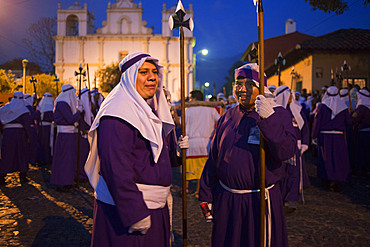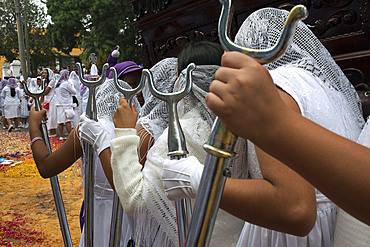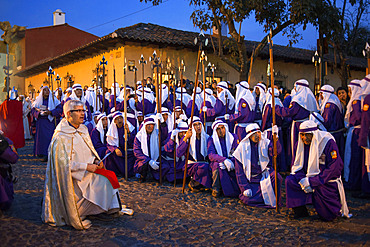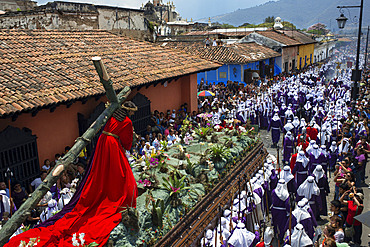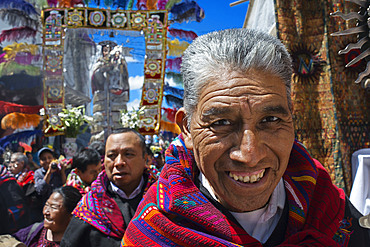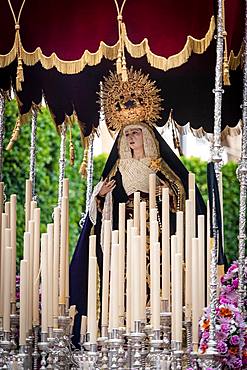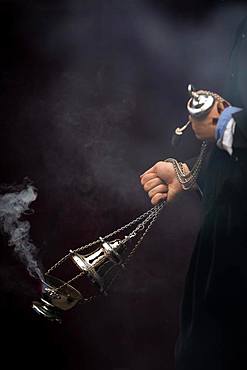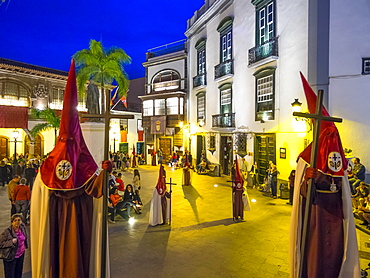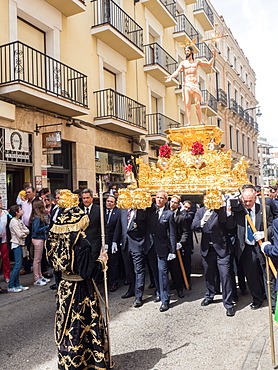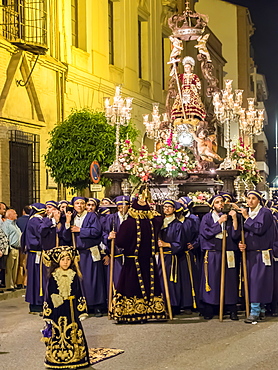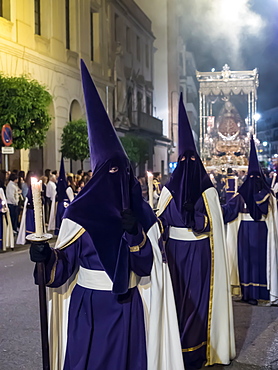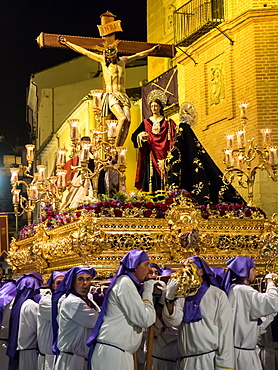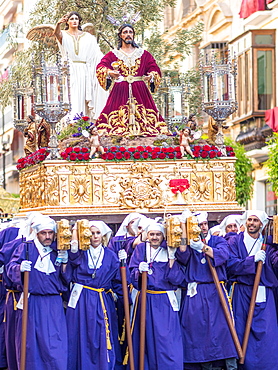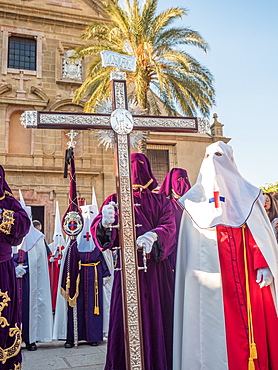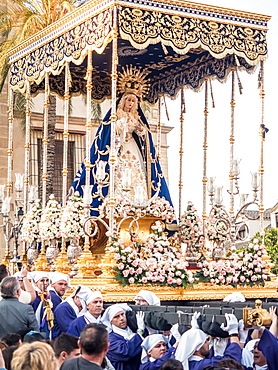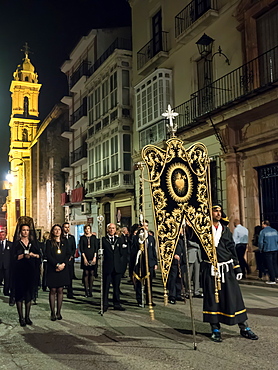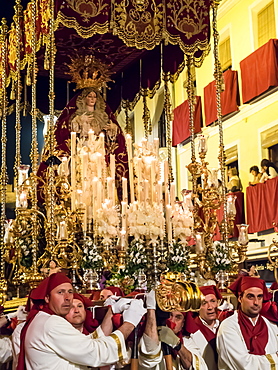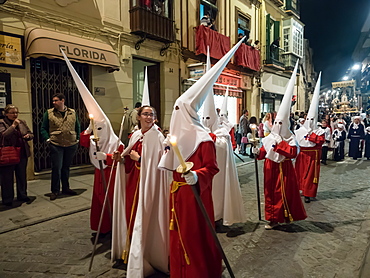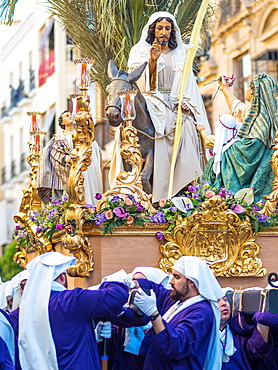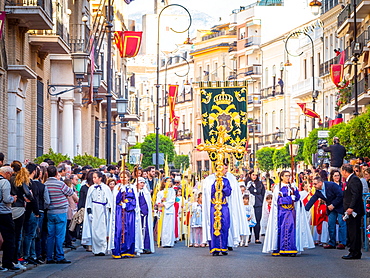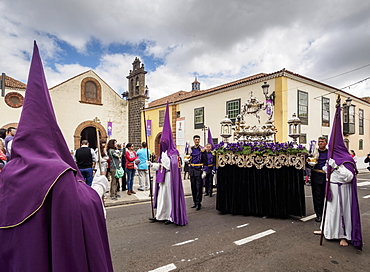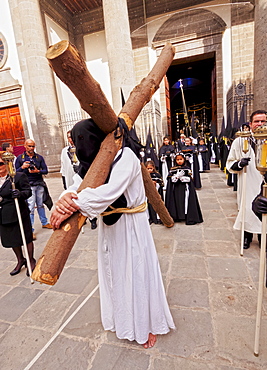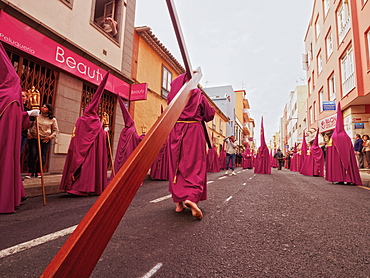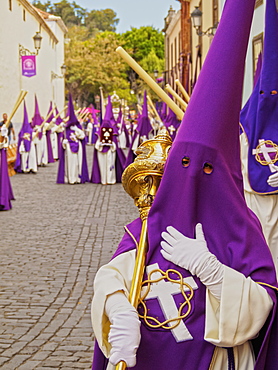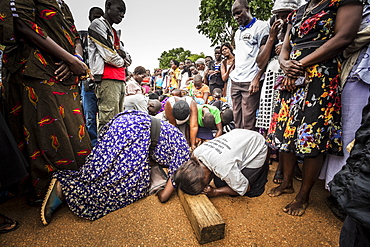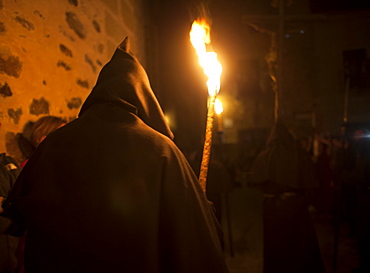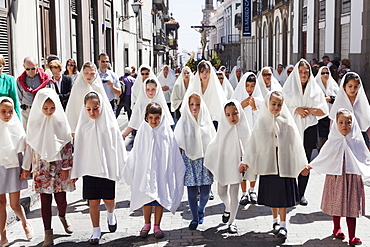Recent searches
Loading...
1384-108 - Procession of people carrying palm leaves on Palm Sunday, Easter 2023, Merida, Yucatan State, Mexico
746-90548 - Mooment of the Good Friday Procession in Savona is a religious event, which dates back to 1200 AD in the Middle Ages. Savona; Liguria; Italy.
746-90550 - Mooment of the Good Friday Procession in Savona is a religious event, which dates back to 1200 AD in the Middle Ages. Savona; Liguria; Italy.
746-90547 - The kiss of Judas by Giuseppe Rungaldier (1926) Brotherhood of Saints Augustine and Monica. Exit from the cathedral.The Good Friday Procession in Savona is a religious event, which dates back to 1200 AD in the Middle Ages. Savona; Liguria; Italy.
746-90546 - Christ falls under the cross (17th century Neapolitan school) Confraternity of Saints Peter and CatherineThe Good Friday Procession in Savona is a religious event, which dates back to 1200 AD in the Middle Ages. Savona; Liguria; Italy.
746-90549 - Mooment of the Good Friday Procession in Savona is a religious event, which dates back to 1200 AD in the Middle Ages. Savona; Liguria; Italy.
746-90545 - Christ falls under the cross (17th century Neapolitan school) Confraternity of Saints Peter and CatherineThe Good Friday Procession in Savona is a religious event, which dates back to 1200 AD in the Middle Ages. Savona; Liguria; Italy.
746-90551 - Mooment of the Good Friday Procession in Savona is a religious event, which dates back to 1200 AD in the Middle Ages. Savona; Liguria; Italy.
1350-3758 - Easter Holy Week procession in Antigua, Guatemala. Jesus Nazareno de la Penitencia Procession in Antigua, Guatemala. Holy Week, friday.
1350-2688 - Verges, a small town in the Northeast of Catalonia (Spain), during Easter celebrates the Procession of Verges with skeletons dancing on the sound of a drum, Roman soldiers, known as the 'Manages', and a representation of the life and crucifixion of Jesus Christ. The Procession features the Dance of Death, a tradition from the Middle Age associated with epidemics and plagues and the only one remaining in Spain Ten skeletons dance to the beat of a drum to remember that no one is exempt of death. The backdrop of the medieval walls and towers of Verges is key to this macabre staging.
1350-3754 - A boy spreads incense at the Jesus Nazareno del Perdon procession during Easter Holy Week in Antigua Guatemala. Holy Week (Semana Santa) carpet of colored sawdust (alfombras) being prepared on Antigua street. Jesus Nazareno de la Penitencia Procession in Antigua, Guatemala.
1350-2693 - Verges, a small town in the Northeast of Catalonia (Spain), during Easter celebrates the Procession of Verges with skeletons dancing on the sound of a drum, Roman soldiers, known as the 'Manages', and a representation of the life and crucifixion of Jesus Christ. The Procession features the Dance of Death, a tradition from the Middle Age associated with epidemics and plagues and the only one remaining in Spain Ten skeletons dance to the beat of a drum to remember that no one is exempt of death. The backdrop of the medieval walls and towers of Verges is key to this macabre staging.
1350-2692 - Verges, a small town in the Northeast of Catalonia (Spain), during Easter celebrates the Procession of Verges with skeletons dancing on the sound of a drum, Roman soldiers, known as the 'Manages', and a representation of the life and crucifixion of Jesus Christ. The Procession features the Dance of Death, a tradition from the Middle Age associated with epidemics and plagues and the only one remaining in Spain Ten skeletons dance to the beat of a drum to remember that no one is exempt of death. The backdrop of the medieval walls and towers of Verges is key to this macabre staging.
1350-2695 - Verges, a small town in the Northeast of Catalonia (Spain), during Easter celebrates the Procession of Verges with skeletons dancing on the sound of a drum, Roman soldiers, known as the 'Manages', and a representation of the life and crucifixion of Jesus Christ. The Procession features the Dance of Death, a tradition from the Middle Age associated with epidemics and plagues and the only one remaining in Spain Ten skeletons dance to the beat of a drum to remember that no one is exempt of death. The backdrop of the medieval walls and towers of Verges is key to this macabre staging.
1350-3751 - Holy Week processions in Guatemala city. Holy Thursday. Holy Week in Guatemala is celebrated with street expressions of faith, called processions, usually organized by a "hermandades". Each procession of Holy Week has processional floats and steps, which are often religious images of the Passion of Christ, or Marian images, although there are exceptions, like the allegorical steps of saints.
1350-3777 - Chichicastenango, Quiche, Guatemala, Central America. Processions of Festival of Santo Thomas. On Easter Sunday The Comrades (Council Men) Carry The Andas (Floats) Of The Saints In Procession From The Santo Tomas
1350-3760 - Easter Holy Week procession in Antigua, Guatemala. Jesus Nazareno de la Penitencia Procession in Antigua, Guatemala. Holy Week, friday.
1350-2690 - Verges, a small town in the Northeast of Catalonia (Spain), during Easter celebrates the Procession of Verges with skeletons dancing on the sound of a drum, Roman soldiers, known as the 'Manages', and a representation of the life and crucifixion of Jesus Christ. The Procession features the Dance of Death, a tradition from the Middle Age associated with epidemics and plagues and the only one remaining in Spain Ten skeletons dance to the beat of a drum to remember that no one is exempt of death. The backdrop of the medieval walls and towers of Verges is key to this macabre staging.
1350-3753 - Holy Week processions in Guatemala city. Holy Thursday. Comparsa. Holy Week in Guatemala is celebrated with street expressions of faith, called processions, usually organized by a "hermandades". Each procession of Holy Week has processional floats and steps, which are often religious images of the Passion of Christ, or Marian images, although there are exceptions, like the allegorical steps of saints.
1350-2691 - Verges, a small town in the Northeast of Catalonia (Spain), during Easter celebrates the Procession of Verges with skeletons dancing on the sound of a drum, Roman soldiers, known as the 'Manages', and a representation of the life and crucifixion of Jesus Christ. The Procession features the Dance of Death, a tradition from the Middle Age associated with epidemics and plagues and the only one remaining in Spain Ten skeletons dance to the beat of a drum to remember that no one is exempt of death. The backdrop of the medieval walls and towers of Verges is key to this macabre staging.
1350-2687 - Verges, a small town in the Northeast of Catalonia (Spain), during Easter celebrates the Procession of Verges with skeletons dancing on the sound of a drum, Roman soldiers, known as the 'Manages', and a representation of the life and crucifixion of Jesus Christ. The Procession features the Dance of Death, a tradition from the Middle Age associated with epidemics and plagues and the only one remaining in Spain Ten skeletons dance to the beat of a drum to remember that no one is exempt of death. The backdrop of the medieval walls and towers of Verges is key to this macabre staging.
1350-3763 - Easter Holy Week procession in Antigua, Guatemala. Jesus Nazareno de la Penitencia Procession in Antigua, Guatemala. Holy Week, friday.
1350-2689 - Verges, a small town in the Northeast of Catalonia (Spain), during Easter celebrates the Procession of Verges with skeletons dancing on the sound of a drum, Roman soldiers, known as the 'Manages', and a representation of the life and crucifixion of Jesus Christ. The Procession features the Dance of Death, a tradition from the Middle Age associated with epidemics and plagues and the only one remaining in Spain Ten skeletons dance to the beat of a drum to remember that no one is exempt of death. The backdrop of the medieval walls and towers of Verges is key to this macabre staging.
1350-2696 - Verges, a small town in the Northeast of Catalonia (Spain), during Easter celebrates the Procession of Verges with skeletons dancing on the sound of a drum, Roman soldiers, known as the 'Manages', and a representation of the life and crucifixion of Jesus Christ. The Procession features the Dance of Death, a tradition from the Middle Age associated with epidemics and plagues and the only one remaining in Spain Ten skeletons dance to the beat of a drum to remember that no one is exempt of death. The backdrop of the medieval walls and towers of Verges is key to this macabre staging.
1350-2697 - Verges, a small town in the Northeast of Catalonia (Spain), during Easter celebrates the Procession of Verges with skeletons dancing on the sound of a drum, Roman soldiers, known as the 'Manages', and a representation of the life and crucifixion of Jesus Christ. The Procession features the Dance of Death, a tradition from the Middle Age associated with epidemics and plagues and the only one remaining in Spain Ten skeletons dance to the beat of a drum to remember that no one is exempt of death. The backdrop of the medieval walls and towers of Verges is key to this macabre staging.
1350-2694 - Verges, a small town in the Northeast of Catalonia (Spain), during Easter celebrates the Procession of Verges with skeletons dancing on the sound of a drum, Roman soldiers, known as the 'Manages', and a representation of the life and crucifixion of Jesus Christ. The Procession features the Dance of Death, a tradition from the Middle Age associated with epidemics and plagues and the only one remaining in Spain Ten skeletons dance to the beat of a drum to remember that no one is exempt of death. The backdrop of the medieval walls and towers of Verges is key to this macabre staging.
1350-3775 - Chichicastenango, Quiche, Guatemala, Central America. Processions of Festival of Santo Thomas. On Easter Sunday The Comrades (Council Men) Carry The Andas (Floats) Of The Saints In Procession From The Santo Tomas
832-385196 - Paso de la Virgen, statue of the Virgin Mary with canopy, Semana Santa procession, Holy Week, Almeria, Andalusia, Spain, Europe
832-385195 - Silver incense barrel with steaming incense is swivelled, Semana Santa, Holy Week, Almeria, Andalusia, Spain, Europe
832-383134 - Mature woman taking part in the Easter procession in the historic centre of Vegueta, Las Palmas, Gran Canaria, Canary Islands, Spain, Europe
832-383133 - Easter procession in the historic centre of Vegueta, Las Palmas, Gran Canaria, Canary Islands, Spain, Europe
832-383135 - Girls taking part in the Easter procession in the historic centre, Vegueta, Las Palmas, Gran Canaria, Canary Islands, Spain, Europe
832-381281 - Easter Procession, Plaza de Espana, Santa Cruz de La Palma, Canary Islands, Spain, Europe
832-381280 - Easter Procession, Plaza de Espana, Santa Cruz de La Palma, Canary Islands, Spain, Europe
1242-168 - Antequera, known for traditional Semana Santa (Holy Week) processions leading up to Easter, Antequera, Andalucia, Spain, Europe
1242-166 - Antequera, known for traditional Semana Santa (Holy Week) processions leading up to Easter, Antequera, Andalucia, Spain, Europe
1242-164 - Antequera, known for traditional Semana Santa (Holy Week) processions leading up to Easter, Antequera, Andalucia, Spain, Europe
1242-163 - Antequera, known for traditional Semana Santa (Holy Week) processions leading up to Easter, Antequera, Andalucia, Spain, Europe
1242-162 - Antequera, known for traditional Semana Santa (Holy Week) processions leading up to Easter, Antequera, Andalucia, Spain, Europe
1242-160 - Antequera, known for traditional Semana Santa (Holy Week) processions leading up to Easter, Antequera, Andalucia, Spain, Europe
1242-167 - Antequera, known for traditional Semana Santa (Holy Week) processions leading up to Easter, Antequera, Andalucia, Spain, Europe
1242-151 - Antequera, known for traditional Semana Santa (Holy Week) processions leading up to Easter, Antequera, Andalucia, Spain, Europe
1242-152 - Antequera, known for traditional Semana Santa (Holy Week) processions leading up to Easter, Antequera, Andalucia, Spain, Europe
1242-153 - Antequera, known for traditional Semana Santa (Holy Week) processions leading up to Easter, Antequera, Andalucia, Spain, Europe
1242-159 - Antequera, known for traditional Semana Santa (Holy Week) processions leading up to Easter, Antequera, Andalucia, Spain, Europe
1242-154 - Antequera, known for traditional Semana Santa (Holy Week) processions leading up to Easter, Antequera, Andalucia, Spain, Europe
1242-158 - Antequera, known for traditional Semana Santa (Holy Week) processions leading up to Easter, Antequera, Andalucia, Spain, Europe
1242-157 - Antequera, known for traditional Semana Santa (Holy Week) processions leading up to Easter, Antequera, Andalucia, Spain, Europe
1242-150 - Antequera, known for traditional Semana Santa (Holy Week) processions leading up to Easter, Antequera, Andalucia, Spain, Europe
1242-149 - Antequera, known for traditional Semana Santa (Holy Week) processions leading up to Easter, Antequera, Andalucia, Spain, Europe
1242-161 - Antequera, known for traditional Semana Santa (Holy Week) processions leading up to Easter, Antequera, Andalucia, Spain, Europe
1245-895 - Traditional Easter Holy Week Procession in San Cristobal de la Laguna, Tenerife Island, Canary Islands, Spain, Europe
1245-896 - Traditional Easter Holy Week Procession in San Cristobal de la Laguna, Tenerife Island, Canary Islands, Spain, Europe
1245-893 - Traditional Easter Holy Week Procession in San Cristobal de la Laguna, Tenerife Island, Canary Islands, Spain, Europe
1245-894 - Traditional Easter Holy Week Procession in San Cristobal de la Laguna, Tenerife Island, Canary Islands, Spain, Europe
1245-897 - Traditional Easter Holy Week Procession in San Cristobal de la Laguna, Tenerife Island, Canary Islands, Spain, Europe
1245-898 - Traditional Easter Holy Week Procession in San Cristobal de la Laguna, Tenerife Island, Canary Islands, Spain, Europe
1245-892 - Traditional Easter Holy Week Procession in San Cristobal de la Laguna, Tenerife Island, Canary Islands, Spain, Europe
1160-3392 - Easter procession, Semana Santa, Madrid, Spain, Europe
1160-3379 - Easter procession, Semana Santa, Madrid, Spain, Europe
746-83100 - Easter religiour procession, Enna, Sicily, Italy, Europe
746-83101 - Easter religiour procession, Enna, Sicily, Italy, Europe
746-83103 - Easter religiour procession, Enna, Sicily, Italy, Europe
746-83121 - San Pier Niceto, village, Easter procession, Sicily, Italy, Europe
746-83107 - Easter religiour procession, Enna, Sicily, Italy, Europe
746-83245 - Easter procession, Leonforte, Sicily, Italy, Europe
746-83124 - San Pier Niceto, village, Easter procession, Sicily, Italy, Europe
746-76571 - Holy Friday procession, Procida island, Campania, Italy, Europe
746-83118 - San Pier Niceto, village, Easter procession, Sicily, Italy, Europe
746-76573 - Holy Friday procession, Procida island, Campania, Italy, Europe
746-83331 - Easter procession, Pietraperzia, Sicily, Italy, Europe
746-83099 - Easter religiour procession, Enna, Sicily, Italy, Europe
746-83117 - San Pier Niceto, village, Easter procession, Sicily, Italy, Europe
1116-39425 - Thousands gather on Good Friday to walk through the streets and proclaim the Gift of God, Gulu, Uganda
1188-789 - Easter Orthodox Christian religious celebrations in Lalibela, Ethiopia, Africa
746-87244 - Good Friday, Easter procession, Assoro, Sicily, Italy, Europe
857-88623 - A penitent dressed as a Benedictine monk holds a torch at the procession of the Black Christ of Santa Maria during Easter Holy Week inside of the Cathedral of Caceres, Extremadura, Spain
857-88680 - A penitent dressed as a Benedictine monk holds a torch at the procession of the Black Christ of Santa Maria during Easter Holy Week inside of the Cathedral of Caceres, Extremadura, Spain
857-88679 - A penitent dressed as a Benedictine monk rings a bell surrounded by men carrying torches at the procession of the Black Christ of Santa Maria during Easter Holy Week inside of the Cathedral of Caceres, Extremadura, Spain
832-369087 - Little blond girl dressed as an angel in white with wings, flower garland and hands clasped in prayer during the Semana Santa, Holy Week festivities in La Nucia, Costa Blanca, Spain
816-7094 - Easter Procession in the Basilica de Minore del Santo Nino, Cebu City, Cebu, Philippines, Southeast Asia, Asia
816-7093 - Easter Procession in the Basilica de Minore del Santo Nino, Cebu City, Cebu, Philippines, Southeast Asia, Asia
832-346621 - Penitent dressed in brown penitential robe (nazareno) carrying large candle at night, Semana Santa, Holy Week Procession, Huelva, Andalusia, Spain
832-346601 - Penitents dressed in blue penitential robes (nazareno), Semana Santa, Holy Week Procession, Seville, Andalusia, Spain
832-346646 - Holy Week procession, Semana Santa, Seville, Andalusia, Spain
832-346647 - Holy Week procession, Semana Santa, Seville, Andalusia, Spain
832-346640 - Penitents dressed in penitential robes, nazareno, Holy week procession, Semana Santa, Seville, Andalusia, Spain
832-344485 - Lu Signuri di li fasci, Holy Week, Easter Procession, Pietraperzia, Sicily, Italy, Europe
712-2690 - La Veronica, Procession of the Mysteries (Processione dei Misteri viventi), Holy Thursday, Marsala, Sicily, Italy, Europe
712-2691 - Procession of the Mysteries (Processione dei Misteri viventi), Holy Thursday, Marsala, Sicily, Italy, Europe
712-2692 - Procession of the Mysteries (Processione dei Misteri viventi), Holy Thursday, Marsala, Sicily, Italy, Europe
832-297722 - Penitents wearing penitential robes (nazareno), Holy Week procession, Semana Santa, Belmonte, Castilla-La Mancha region, Spain
832-297723 - Penitents wearing penitential robes (nazareno), Holy Week procession, Semana Santa, Belmonte, Castilla-La Mancha region, Spain
832-262452 - Cattenaciu, catholic easter procession, Sartene, Corsica, France, Europe
832-252542 - Good Friday procession, Camara de Lobos, Madeira, Portugal
1160-744 - Easter procession Semana Santa, Vegueta old town, Las Palmas, Gran Canaria, Canary Islands, Spain, Europe
1160-742 - Easter procession Semana Santa, Vegueta old town, Las Palmas, Gran Canaria, Canary Islands, Spain, Europe
1160-743 - Easter procession Semana Santa, Vegueta old town, Las Palmas, Gran Canaria, Canary Islands, Spain, Europe
832-228446 - Georgiritt, George's Ride, Easter Monday procession to the Ettendorf Church, Traunstein, Chiemgau, Upper Bavaria, Bavaria, Germany, Europe
832-228429 - Historic sword dance, Georgiritt, George's Ride, Easter Monday procession, town square with parish church in Traunstein, Chiemgau, Upper Bavaria, Bavaria, Germany, Europe








